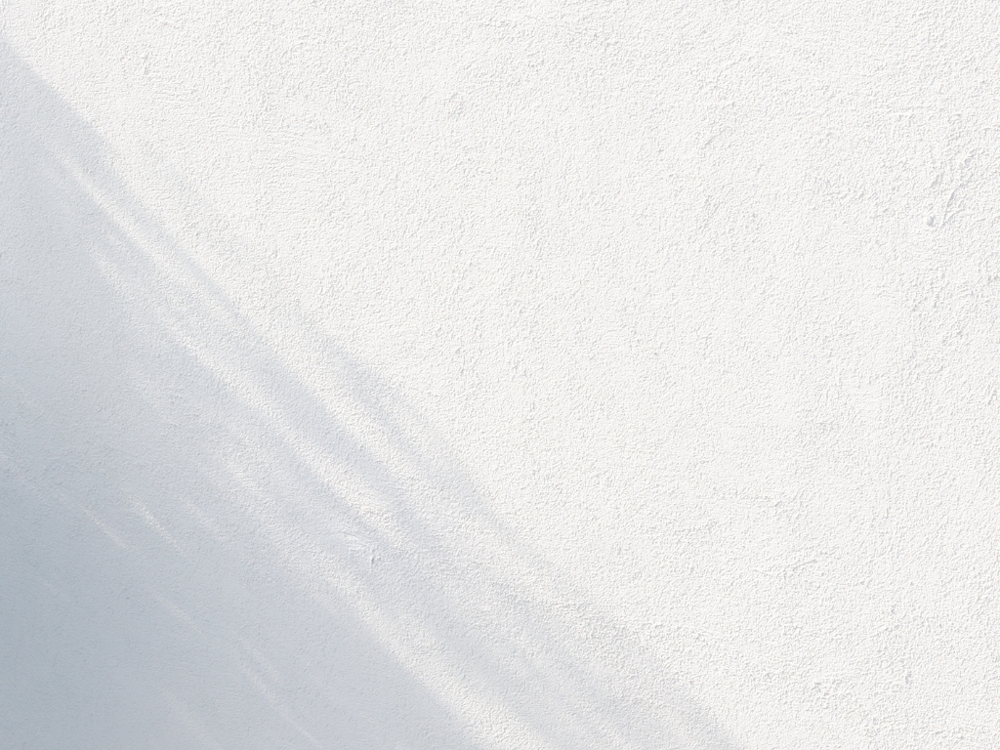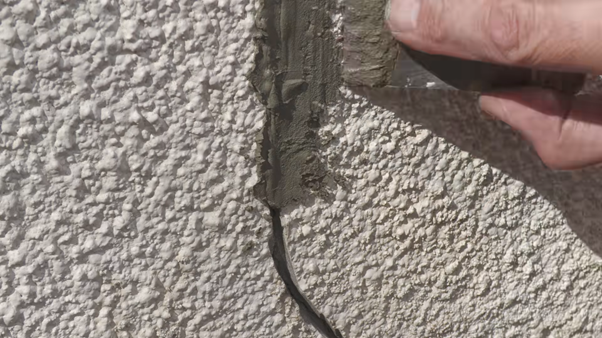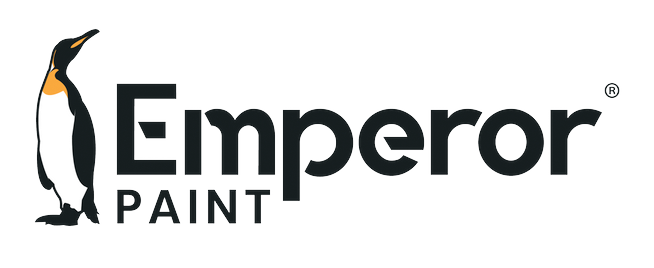
In the UK, our homes have a huge number of textures, from smooth sand and cement render to heavy roughcast and pebbledash. The flexibility to create textures when needed is essential, which is why we have put together this complete guide on how to create rough and heavy textures on your exterior walls.
When Would You Need To Create A Texture?
There is a wide variety of reasons you may need to create a textured finish on external walls. In short, creating a textured finish allows you to cover imperfections and create a uniform textured finish.
With cracked render or areas where render has been repaired, the newly repaired areas will often be repaired using a smooth filling system, such as masonry filler. The problem is, once this smooth surface is painted, you will still be able to see the area you have repaired as the texture will differ to any existing textured finish.
There are many who suggest that a textured finish is more durable than a smooth finish, however there is little to substantiate this. The reason textured finishes are more common in areas that receive heavier weathering such as rural and coastal areas is that a textured finish is easier to repair if the external walls become damaged. Smooth surfaces once damaged must be repaired with precision in order to disguise the repairs, while a textured finish can be repaired providing that the texture of the new area matches the original surface.
What Can You Use To Create A Texture?
There are a number of products that can help create a textured finish on exterior walls, including using a rendering system, a textured masonry paint or a textured basecoat.
RENDERING
The first way to create a textured finish is to use a traditional rendering system. Render systems can come in a range of forms, including cement render, lime render, acrylic render, silicone render, pebbledash and single coat render systems such as monocouche. These types of renders can all create differing textures depending on the formulation and how they are applied.
Typically a 'textured' finish, otherwise known as a roughcast is a fine texture that has aggregates added to the render mix to give the appearance of lots of small stones. A pebbledash involves applying a smooth wet mix to the wall and then throwing the stones on to the surface. Other textures include a 'scraped' finish that has a smooth, finely pitted finish and a 'tyrolean' finish, that has a honeycomb type finish.
TEXTURED MASONRY PAINT
Textured masonry paint refers to exterior paints that are designed for exterior walls including brick, stone and render that create a textured finish. This is in contrast to majority of masonry paints that are smooth and simply cover surfaces without changing the texture in any way.
Textured masonry paint as a paint can only be applied at one level of texture. There are two types of textured masonry paint; fine textured masonry paint that creates a small pitted finish and heavy textured masonry paint that creates a rougher, more built-up finish.
The drawback of textured masonry paint along with the inability to create a range of different textures is that it is a textured finish and paint is one product. This means that in order to create the texture you are looking for, you must use that specific paint, preventing the ability for you to use a paint that suits you. This puts a limitation on the colour you can use and means you must ensure the textured masonry paint itself is up to the task.
Using a cheap or poor quality textured masonry paint could result in the paint failing in a short period of time. Furthermore, if the textured masonry paint is not highly breathable, you could experience problems when moisture begins to build-up underneath the paint. The majority of textured masonry paints are either oil-based or acrylic-based formulations, due to these being easy and cheaper to produce. The problem is, these don't have very good breathability and can contribute towards damp, paint failure and damage to the exterior wall.
TEXTURED BASECOAT
The final option when trying to create a rough or heavy texture on your exterior walls is to use Emperor Textured Basecoat. This unique product can create a range of textured finishes from light textures to heavy textured using a range of textured rollers. Each roller creates a different finish for complete flexbility to create the texture your require.
Once applied, you can then paint the basecoat with any masonry paint you like, meaning you do not have to compromise on colour or performance and can use a masonry paint that is right for your needs.
The basecoat is also highly breathable, with an SD breathability value of 0.04 which is as breathable as limewash. This allows air and water vapour to easily escape because the pores of the walls are not sealed. This is thanks to the ability for Emperor Textured Basecoat to actively bond to the wall and maintain an open-pore structure, ensuring the pores are not blocked and any moisture within the wall naturally pass through.
While creating a range of textured finishes that can match the appearance of a rendered surface, the basecoat can also be painted the very next day. In comparison, new render can take up to 4 weeks to dry sufficiently before it can be painted.

How To Create a Rough Textured Finish
The process of creating a textured finish with Emperor Textured Basecoat is something that all experience levels can undertake, following our step-by-step guide.
YOU WILL NEED
- Emperor Textured Basecoat
- Textured roller
- Paint tray or scuttle
- Paint brush
- Dust sheets
- Masking tape
- Exterior filler & filling knife (may be required)
- 120 grit sandpaper
- Scraper (may be required)
1. PREPARATION
The first port of call is to prepare the wall ready to apply the basecoat. This involves cleaning the surface and making any repairs to ensure the full surface is sound.
Any cracks, holes or areas of the wall that are not sound need to be filled. Cracks that are smaller than 0.5mm will be covered by Emperor Textured Basecoat, however any cracks larger than this must be filled using a good-quality exterior filler such as Toupret Masonry Repair Filler. Simply fill the masonry by working the filler back and forth with a filling knife into hole or crack and allow to fully dry. This can take up to 24 hours. Once dry, sand the filler back to even the surface.

If the surface has been previously painted, remove any peeling paint using a scraper or a stiff-bristled brush. Any paint that is still sound does not need to be removed.
Once repairs are made, wash the walls down using a hose-pipe or a pressure washer on a low pressure to remove surface-level dirt. On any areas that suffer from organic growth apply a fungicidal masonry cleaner such as Emperor Masonry Cleaner. Simply apply the cleaner with a brush or roller and allow it to dry for a minimum of 2 hours or until the surface is dry to the touch.
2. BASECOAT
Emperor Textured Basecoat is a self-priming product so bare, unpainted surfaces do not need to be primed first. Simply apply the basecoat directly to bare or previously painted walls.
Load the Emperor Textured Basecoat on to your chosen roller ensuring the full roller is covered with the basecoat and simply roll it on to the wall. The more times you roll over the same area, the more you will spread the texture and the lighter the texture will be.
You can expect a coverage of 350-500g per m², which will depend on the level of texture you are applying. The heavier the texture, the lower the coverage with be. Once applied, allow to dry for 24 hours at 20°C or slightly longer at lower temperatures.
If you can't achieve the level of texture you require on the first coat, you can apply a second coat if you would like. This allows you to build up the texture, which is handy in cases where the areas that have been repaired are deeper than original part of the wall.
3. PAINT
Once the basecoat is dry, the next day you can then paint the wall with your chosen masonry paint.
For the best results we highly recommend reading the datasheet of your chosen masonry paint. Adhering to the correct coverage rates, recoat times and other application instructions is essential for achieving beautiful results that stand the test of time.
Check out how professional decorator Ian Costello used Emperor Textured Basecoat to give this wall a new lease of life.
Frequently Asked Questions
Q. CAN I APPLY EMPEROR TEXTURED BASECOAT TO A FULL WALL?
You can apply Emperor Textured Basecoat to isolated areas that need to be masked or a full wall. Many people may have a textured wall on one side of their property and a smooth render on the other wall meaning matching these textures is desirable. The larger the surface you apply the textured basecoat to, the less noticeable any repairs will be.
Q. WILL TEXTURED FINISHES GET DIRTY?
One of the most common problems homeowners can experience with textured finishes is that they have a tendency to gather dirt over-time. The small gaps between the texture can create a breeding ground for organic growth to attach and discolour the surface.
Many masonry paints won't prevent this, however you can regularly clean the surface to remove this dirt to restore the wall back to its former glory. Alternatively, Emperor Masonry Paint has self-cleaning properties that prevent this discolouration, helping to keep textured finishes cleaner for longer.
Q. WHAT MASONRY PAINT SHOULD I USE?
If you opt to use Emperor Textured Basecoat to create your textured finish, you can paint the surface with any masonry paint you want.
Our Emperor Masonry Paint is fully compatible with Emperor Textured Basecoat and contains highly advanced super hydrophobic technology that repels water, ensuring your walls stay dry. As well as this, it is also highly breathable meaning you do not compromise the breathability of your walls. As moisture is the biggest cause of paint failure, by keeping the surface dry Emperor Masonry Paint has extreme durability in all weather conditions with a 25 year proven performance and comes with a lifetime guarantee.
We hope we have answered any questions you may have had regarding textured paint and how to apply them to exterior walls. If you have any other questions or would like advice, feel free to get in touch with our team of experts who are on hand to assist you. Contact them today by emailing info@emperorpaint.co.uk or calling them on 0161 509 9009. If you are ready to start creating your textures why not order your sample pot of Emperor Textured Basecoat and see our innovative formulation for yourself.

